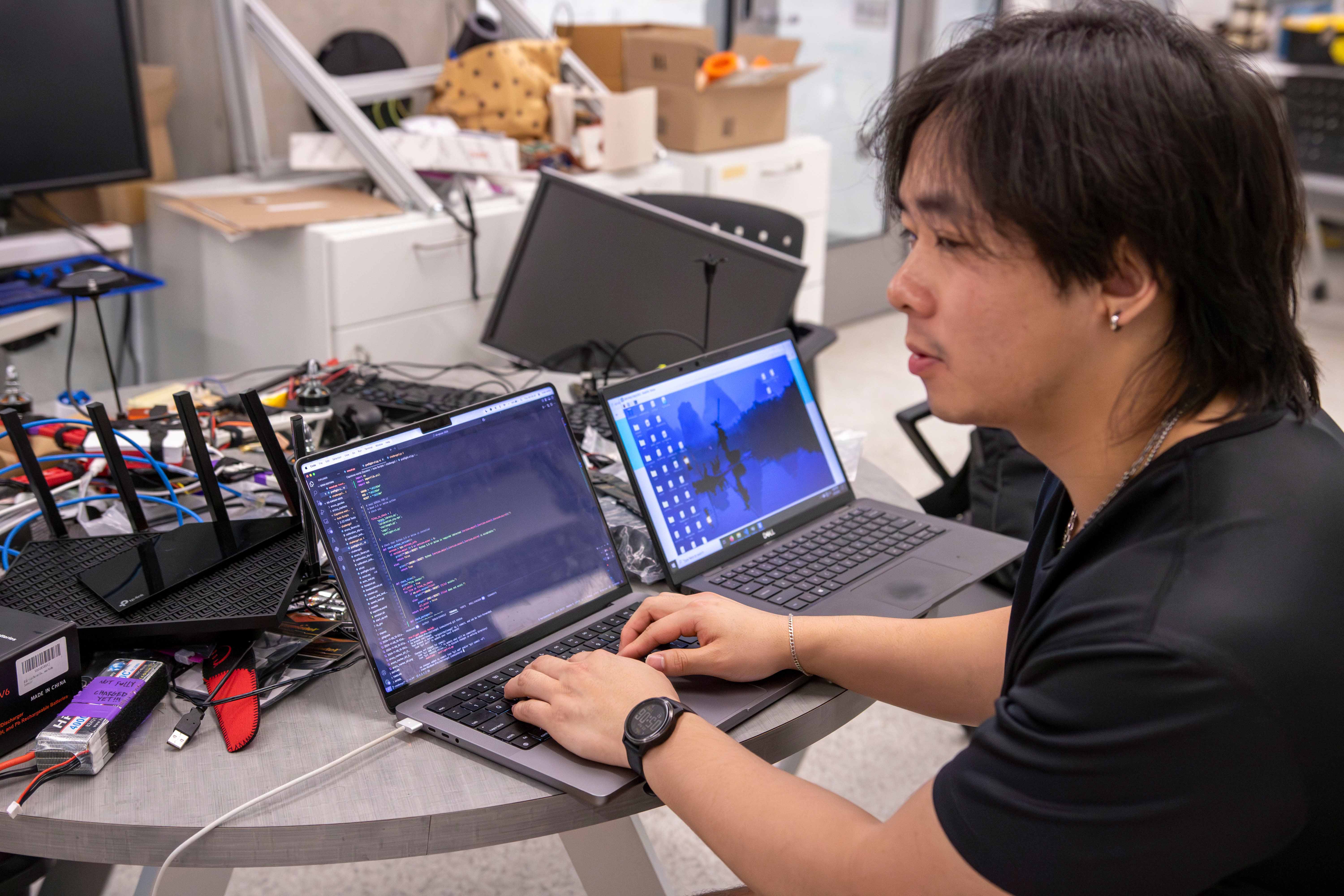RTX UAV: Raytheon Autonomous Vehicle Competition

Project Team
Nedah Ahmad
Onur Coban
Henry Fu
Dorlene Jung
Josh Kweon
Yafiet Mihreteab
Mark Parrish
Ben Sirota
Valeria Tovar-Munoz
Aarifah Ullah
Ivan Winters
Jordan Yee
Michael Yoo
Project Mentor(s)
Jarick Cammarato, Raytheon, Innovation Business Alignment Lead
Instructor(s)
Dr. Amir Aslani, ECE, GW Engineering
Dr. Xiaodong Qu, CS, GW Engineering
Dr. Steven Shooter, MAE, GW Engineering
Dr. Tim Wood, CS, GW Engineering
The Autonomous Vehicle Competition, sponsored by Raytheon, is a regional competition held every year. Students in Engineering and STEM disciplines are encouraged to find unique solutions and compete in a series of timed challenges, while having friendly competition with participating universities. This year’s theme is a search and rescue mission where a drone drops off a package after finding the randomized location. The challenges feature autonomous missions, drone-to-drone communication where drones work collaboratively, and efficient search and delivery.
Who experiences the problem?
The challenges presented in this competition address current issues and provide many use cases, such as finding missing persons in a natural disaster and delivery of essential supplies in otherwise remote locations. In urban settings, drone delivery can improve traffic congestion by reducing the number of cars on the road. Drones also provide mission-critical services such as emergency response. Some police departments even deploy drones to reach households in as little as two minutes compared to a police car taking ten minutes, providing life-saving service.
Why is it important?
The need to improve drone technology is important since their applications are versatile and multi-functional. Present research into drone-to-drone communication is essential as more drones share the same air space, introducing collaborative work to achieve a common goal.
What is the coolest thing about your project?
Working on a shared project across different departments is definitely the coolest aspect of our project. Each individual contributes with their area of expertise in a project that requires all aspects of engineering and software development from drone assembly to programming.
And of course, watching our own drones fly in the air.
What were some technical problems?
Working on this project required creativity and efficient use of time. The development of drones in the DC-area with heavy flight restrictions meant that we had to think of ways to work on our project while following the rules. It also required persistence and dedication as we often travel nearby to Northern Virginia.

